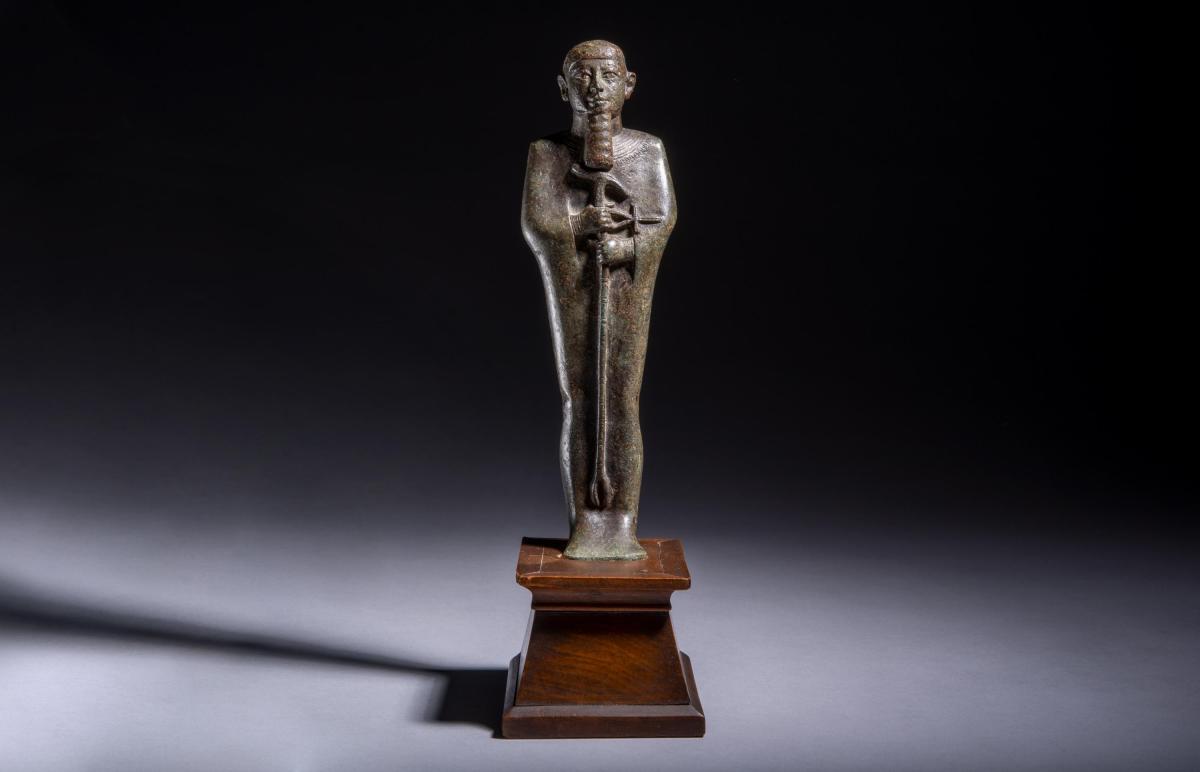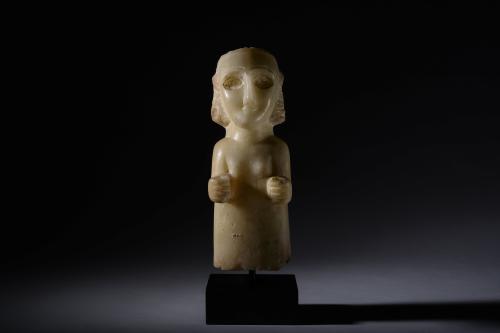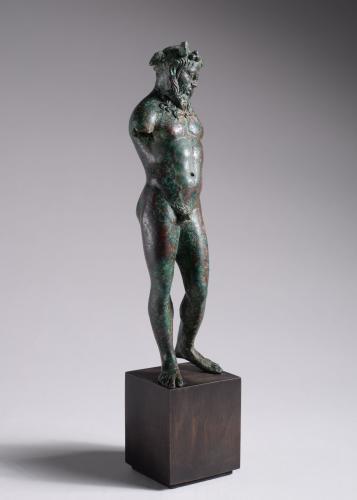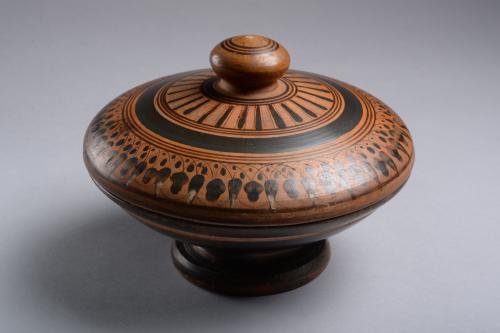

This object is eligible for a Certificate of BADA Provenance
The BADA Standard
- Since 1918, BADA has been the leading association for the antiques and fine art trade
- Members are elected for their knowledge, integrity and quality of stock
- Our clients are protected by BADA’s code of conduct
- Our dealers’ membership is reviewed and renewed annually
- Bada.org is a non-profit site: clients deal directly with members and they pay no hidden fees
Egyptian Bronze Statuette of Ptah.
A beautiful bronze statuette depicting the Egyptian god Ptah, 25th to early 26th Dynasty, circa 750-600 B.C.
Standing mummiform and wearing a tight-fitting skullcap and wide royal beard. The god holds the was-sceptre, symbolising power, and the ankh, symbolising life. He wears bracelets and a broad collar with a tassel hanging over his shoulder, his chin strap, eyebrows and cosmetic lines in black bronze and his eyes inlaid with silver. The fine features of the god are characteristic of depictions dating to the 25th and 26th Dynasties. Exceptionally fine and well-preserved, this statuette is a testament to the talent and skills of Egyptian bronzesmiths.
Ptah, the great creator-god, was believed to have dreamt creation in his heart and given it life with his breath. His attributes illustrate this demiurgic role. He was the patron of craftsmen and architects and was considered to be the Lord of Truth and Master of Justice, listening to the prayers of individual worshippers and interceding in their favour. Originally worshipped in Memphis, his cult spread across Egypt when the city became the capital of the Old Kingdom. Pharaohs were often coronated in his temple. In fact, Ptah's importance was such that he partly gave his name to Egypt. Indeed, Memphis was originally called Hut-ka-ptah ("house of the soul of Ptah"), which was pronounced Aegyptos in Greek, a name which would later apply to the entire country.
"For the very great one is Ptah, who gave [life] to all the gods and their kas through this heart and through this tongue…"
Shabaka Stone, British Museum (EA498), line 53.
Height: 8 inches with tenon, 6.75 inches without. 8.75 inches on base.
Provenance:
With N. Tano (1866-1924), Cairo. Reputedly acquired by Mr. and Mrs. Eliot A. Carter of Nashua, N.H., and Cataumet, Mass., in Egypt in the 1920s. Thence by descent to the collection of David and Louise Carter, Connecticut.
The BADA Standard
- Since 1918, BADA has been the leading association for the antiques and fine art trade
- Members are elected for their knowledge, integrity and quality of stock
- Our clients are protected by BADA’s code of conduct
- Our dealers’ membership is reviewed and renewed annually
- Bada.org is a non-profit site: clients deal directly with members and they pay no hidden fees




